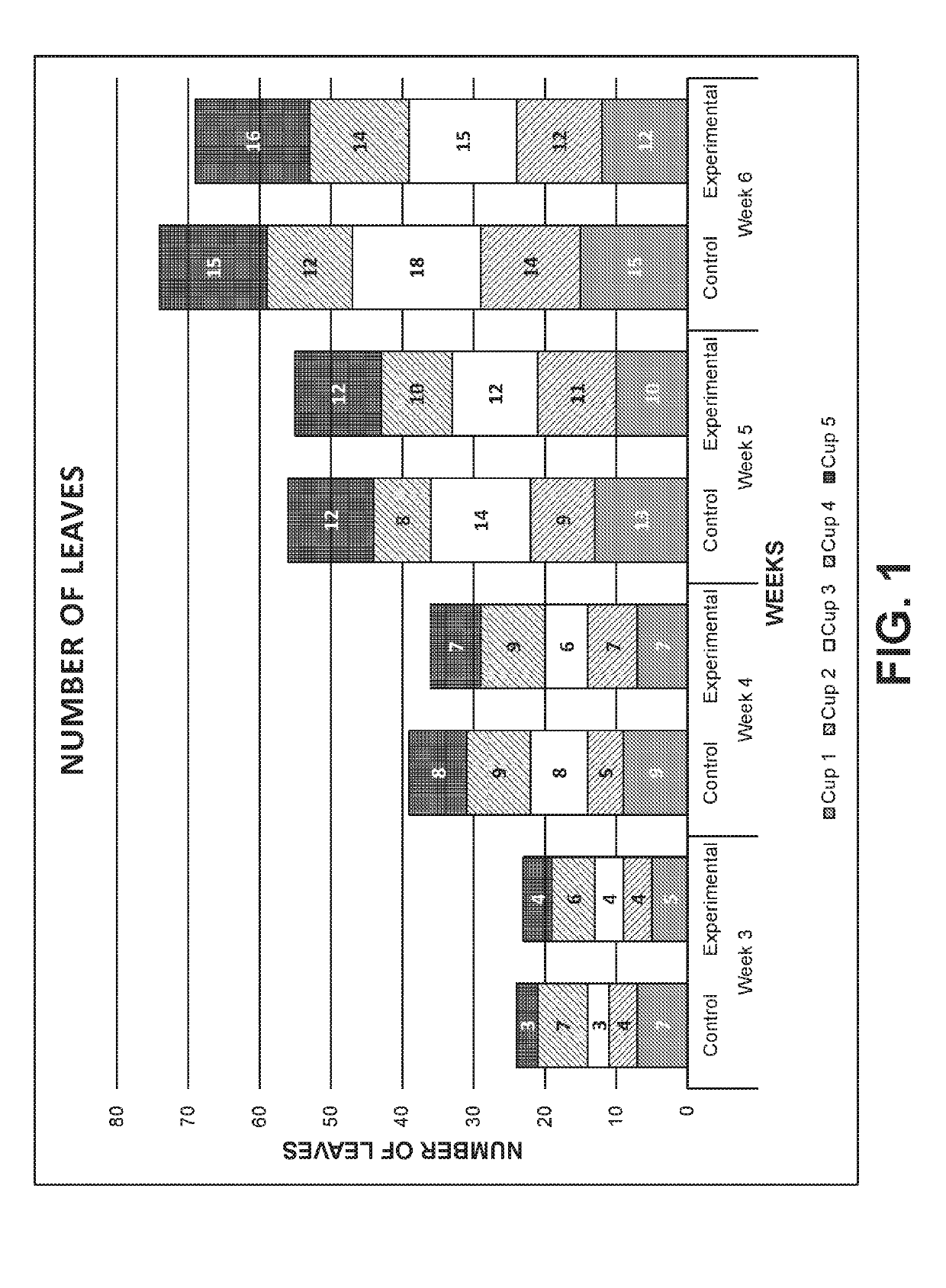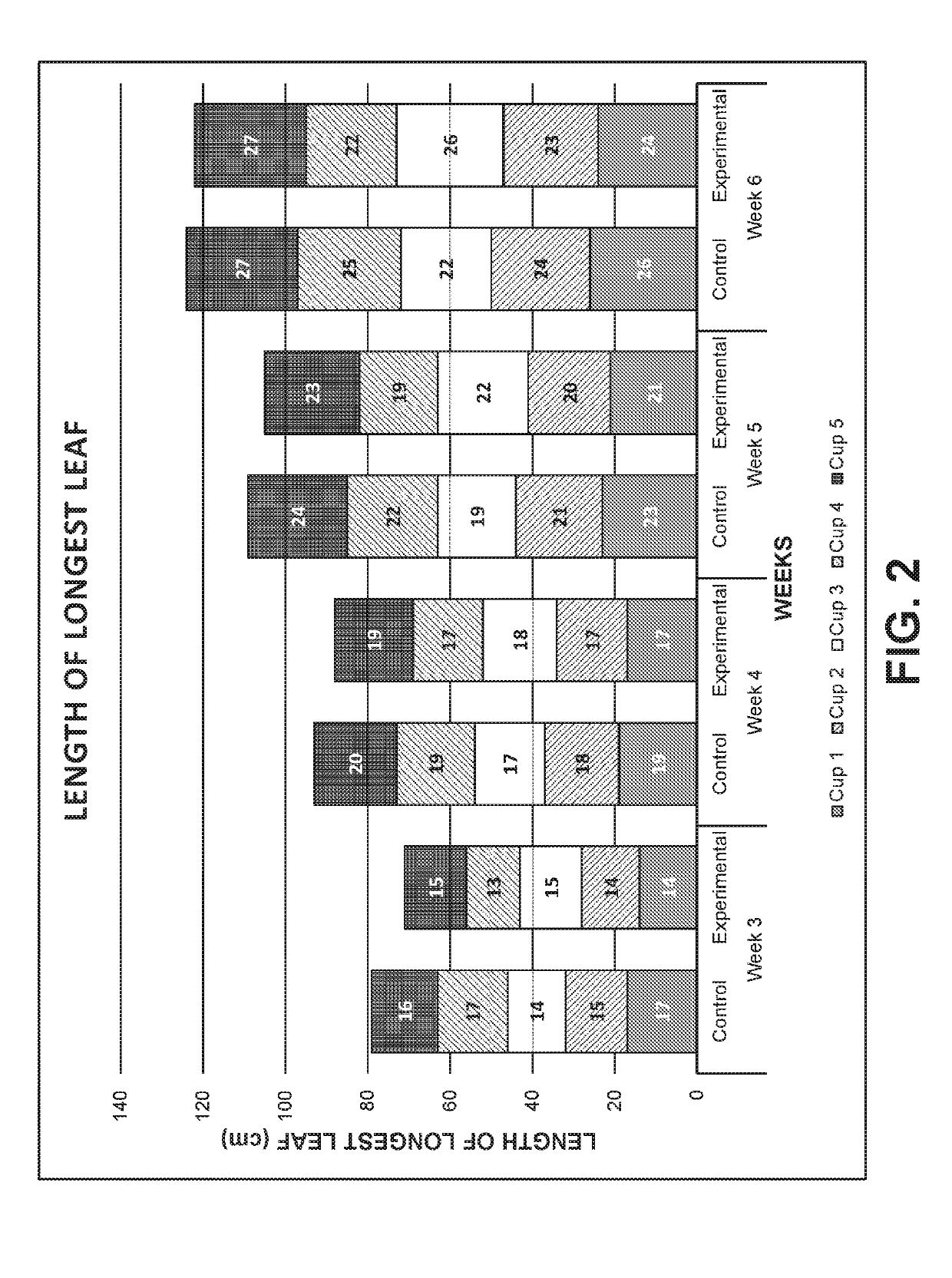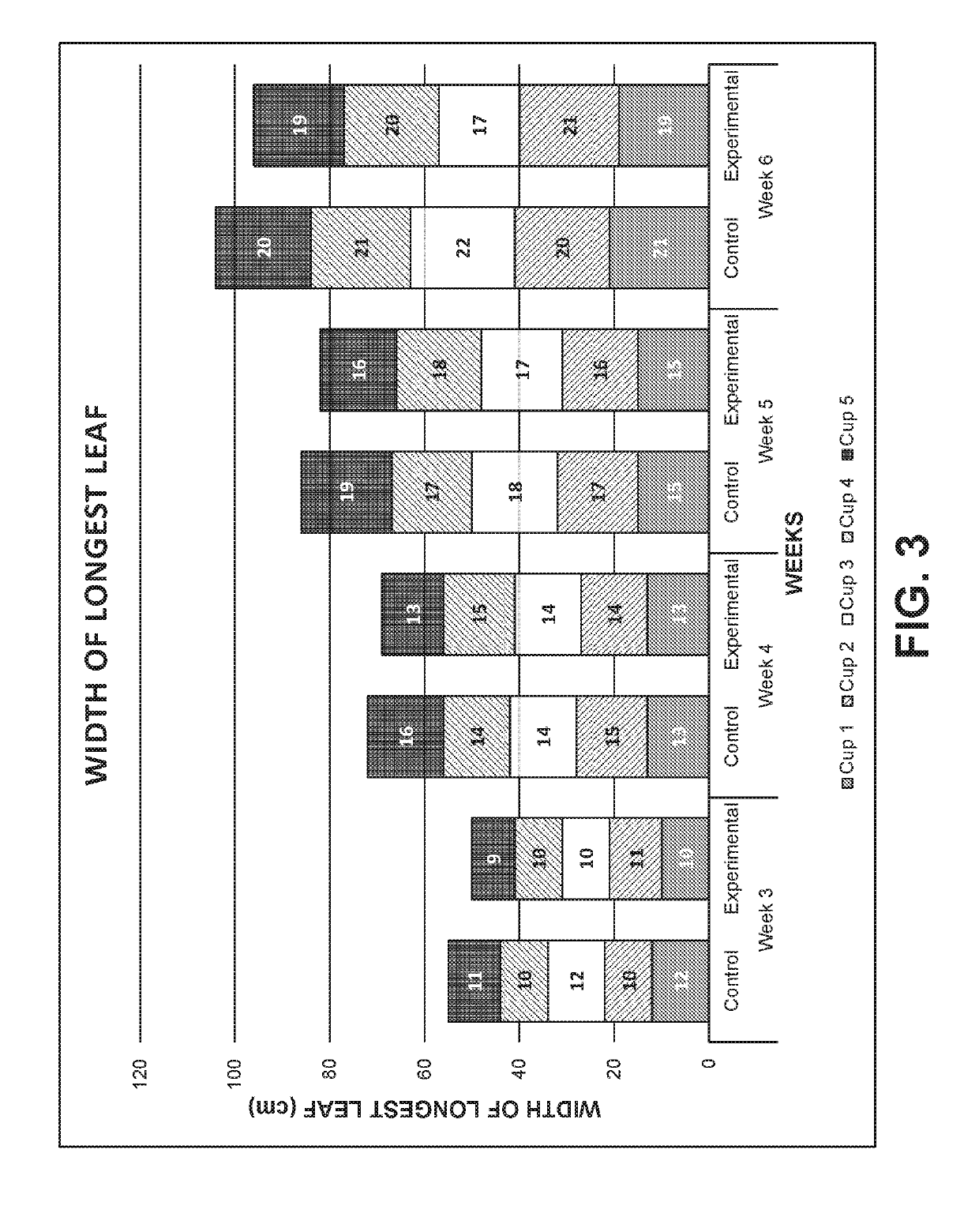Foliar feeding formulation and methods of use
a technology of foliar feeding and formulation, applied in the field of hydroponic plant growth, can solve the problems of insufficient specificity, high cost, and insufficient ion-specific electrodes, and achieve the effect of less infrastructure, monitoring and/or maintenan
- Summary
- Abstract
- Description
- Claims
- Application Information
AI Technical Summary
Benefits of technology
Problems solved by technology
Method used
Image
Examples
example 1
ulation for Foliar Application
[0097]A powder comprising the substances as listed within Table 1A (in grams g)) was added to one liter (l) of water to produce a feed formulation of the invention, having a final pH of 5.6.
TABLE 1ASubstanceGrams (g)Thiamin0.10Ascorbic acid0.50Citrulline6.00Myoinositol0.10Potassium chloride0.50Calcium chloride0.80Magnesium sulfate heptahydrate0.37Monopotassium phosphate0.17Manganese sulfate0.017Ferric citrate0.01Zinc sulfate0.0086Boric acid0.0062Potassium iodide0.00083Sodium molybdate0.00025Cupric sulfate0.000025Cobaltous chloride0.000025EDTA disodium dehydrate0.373Potassium hydroxide0.25DMSO10SLES10Nickel sulfate3.0TOTAL32.206
example 2
eed Formulation for Foliar Application
[0098]A powder comprising the substances as listed within Table 1B (in grams (g)) is added to one liter (l) of water to produce a feed formulation of the invention having a final pH of 5.6
TABLE 1BSubstanceGrams (g)Thiamin0.10Ascorbic acid0.50Citrulline6.00Myoinositol0.10Potassium chloride0.50Calcium chloride0.80Magnesium sulfate heptahydrate0.37Monopotassium phosphate0.17Manganese sulfate0.017Ferric citrate0.01Zinc sulfate0.0086Boric acid0.0062Potassium iodide0.00083Sodium molybdate0.00025Cupric sulfate0.000025Cobaltous chloride0.000025EDTA disodium dehydrate0.373Potassium hydroxide0.25DMSO20SLES20Nickel sulfate3.0TOTAL52.206
example 3
c Growth of a Leafy Vegetable Plant Utilizing the Foliar Feed Formulation of Example 1 Compared to the Growth of a Leafy Vegetable Plant Utilizing a Traditional, Root-Fed Hydroponic System
[0099]Forty Lactuca sativa seeds were divided, one each, into net cups having perforations within their bottoms sufficient for plant roots to pass through (hereinafter cup(s)). The forty cups were further divided into four groups, ten cups each. The four groups were each assayed for a different yield characteristic. Five plants within each group were control plants and the remaining five plants within each group were experimental plants. But-for the differences detailed below, control and experimental plants were grown in comparable conditions.
[0100]Each of the twenty experimental plant cups were attached to a raft wherein the raft was in contact with river water. Once daily for six weeks, about 9 ml of the feed formulation was applied to all twenty experimental seeds and to the foliage of the plan...
PUM
| Property | Measurement | Unit |
|---|---|---|
| temperature | aaaaa | aaaaa |
| temperature | aaaaa | aaaaa |
| wind speeds | aaaaa | aaaaa |
Abstract
Description
Claims
Application Information
 Login to View More
Login to View More - R&D
- Intellectual Property
- Life Sciences
- Materials
- Tech Scout
- Unparalleled Data Quality
- Higher Quality Content
- 60% Fewer Hallucinations
Browse by: Latest US Patents, China's latest patents, Technical Efficacy Thesaurus, Application Domain, Technology Topic, Popular Technical Reports.
© 2025 PatSnap. All rights reserved.Legal|Privacy policy|Modern Slavery Act Transparency Statement|Sitemap|About US| Contact US: help@patsnap.com



